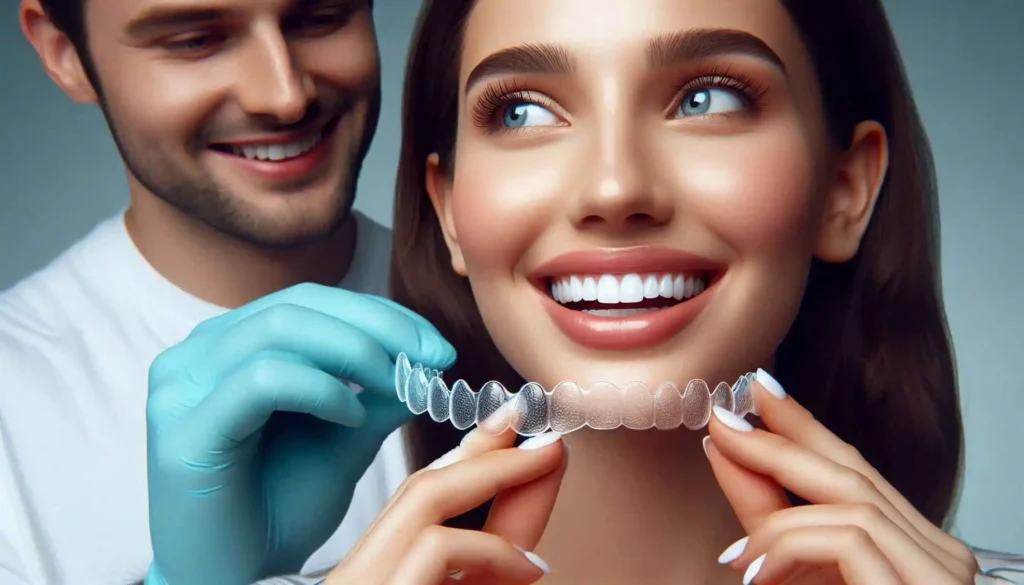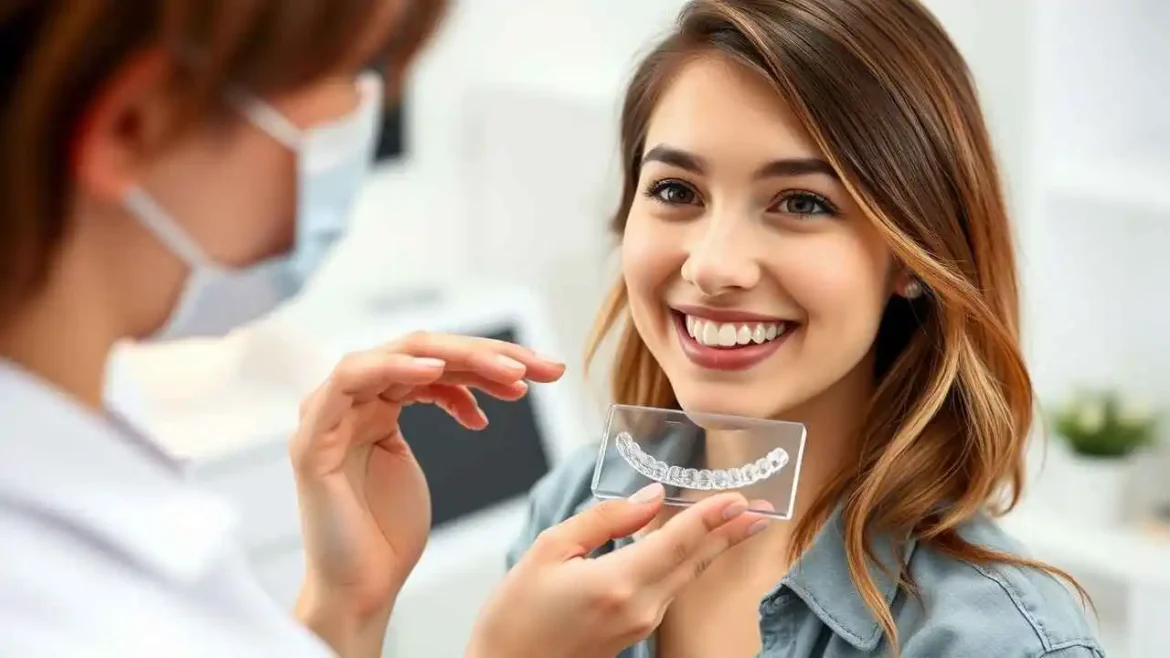
How Can We Achieve Straighter Teeth Without Braces?
The desire for a perfectly aligned smile is something many of us share. A straight smile can boost confidence, improve oral hygiene by making teeth easier to clean, and even contribute to overall bite function. For decades, traditional metal braces have been the go-to solution for correcting misaligned teeth and bite issues. However, we understand that for various reasons – aesthetics, comfort, lifestyle, or the perceived hassle – many people are looking for alternatives to the visible brackets and wires of conventional braces.
Fortunately, advances in dental technology and techniques have opened up a world of possibilities for aligning teeth without the need for metal braces. We now have several effective methods at our disposal, offering different approaches to achieving that desired straight smile. It’s important to understand that not all methods are suitable for every case, and the best course of action always depends on the individual’s specific needs and the complexity of their dental situation.
Let’s explore the primary ways we can work towards aligning teeth and improving smiles without resorting to traditional “belted” (braced) orthodontics.
Why Look Beyond Traditional Braces?
Before diving into the alternatives, it’s helpful for us to consider why someone might seek a different path than standard braces. Common reasons we hear include:
- Aesthetics: Metal braces are highly visible and can be a source of self-consciousness for some individuals, particularly adults.
- Comfort: While modern braces are more comfortable than in the past, wires and brackets can still cause irritation, sores, and discomfort.
- Lifestyle: Dietary restrictions (avoiding sticky or hard foods) and more involved cleaning routines are necessary with traditional braces.
- Treatment Time: While treatment time varies for all methods, some alternatives may offer quicker results for specific types of misalignment.
- Perception: Some simply prefer a less conspicuous or removable option.
Understanding these motivations helps us appreciate why the alternatives we discuss are so appealing to a broad audience.
The Main Alternatives We Can Consider
When we talk about aligning teeth without traditional braces, we are generally looking at two main categories of approaches:
- Methods that Move Teeth: These are orthodontic treatments designed to gradually shift teeth into new, desired positions.
- Methods that Mask or Change the Appearance of Misaligned Teeth: These are cosmetic solutions that make teeth look straighter or more aligned without actually moving their underlying position.
It’s crucial for us to differentiate between these two categories, as they serve different purposes and address different levels of misalignment.
1. Clear Aligners: The Most Popular Brace-Free Movement
Perhaps the most well-known and widely used alternative for moving teeth without traditional braces is the system of clear aligners. Brands like Invisalign are pioneers in this field, but many other reputable options now exist.
How We Use Clear Aligners:
Clear aligner therapy involves a series of custom-made, clear plastic trays that fit snugly over the teeth. Each set of aligners is worn for about one to two weeks before moving to the next set in the series. Each new aligner is slightly different from the last, designed to apply gentle pressure to specific teeth, gradually guiding them into the planned final position.
The process typically begins with a consultation where an orthodontist or dentist assesses the suitability of clear aligners for the case. If deemed appropriate, a detailed 3D scan or impression of the teeth is taken. Using specialized software, a virtual treatment plan is created, showing the step-by-step movement of the teeth from their initial position to the desired final alignment. This plan is then used to manufacture the entire series of aligners needed for the treatment.
Wearing and Living with Aligners:
For treatment to be effective, we are typically instructed to wear the aligners for 20-22 hours per day. They are removed only for eating, drinking anything other than water, brushing, and flossing. This removability is a significant advantage for many people, allowing for easier oral hygiene and freedom with food choices (as long as we remember to put the aligners back in promptly!).
Advantages We See with Clear Aligners:
- Aesthetics: They are virtually invisible when worn, making treatment discreet.
- Comfort: No wires or brackets to poke or irritate the mouth’s soft tissues.
- Removability: Allows for normal eating, drinking, brushing, and flossing.
- Predictability: The 3D treatment plan gives us a clear idea of the expected outcome.
- Fewer Appointments: Often require less frequent check-ups compared to traditional braces.
Considerations and Limitations We Need to Be Aware Of:
- Compliance is Key: Success heavily relies on wearing the aligners for the prescribed hours each day.
- Not for All Cases: Clear aligners are most effective for mild to moderate crowding, spacing issues, and some bite corrections. Severe or complex orthodontic problems may still require traditional braces or other treatments.
- Need to Remove for Meals: Requires planning around meals and snacks.
- Cost: Can sometimes be comparable to or slightly higher than traditional braces, depending on the case complexity.
2. Retainers: For Very Minor Adjustments or Post-Treatment
While primarily used after orthodontic treatment to maintain tooth position, certain types of retainers, particularly active retainers like Essix retainers or Hawley retainers with specific wire adjustments, can sometimes be used to correct very minor relapses or subtle misalignments.
We use retainers in this capacity for extremely limited tooth movement. They are not a substitute for comprehensive orthodontic treatment but can sometimes address minor issues in cases where larger movements are not needed.
3. Cosmetic Solutions: Veneers and Bonding
Moving to the category of masking misalignment, we find options like dental veneers and cosmetic bonding. These treatments don’t move the teeth but change their outward appearance to create the illusion of straightness and alignment.
- Dental Veneers: These are thin, custom-made shells, usually made of porcelain or composite resin, that are bonded to the front surface of teeth. We can use veneers to change the color, shape, size, and length of teeth. By carefully designing and placing veneers, we can make slightly crooked or spaced teeth appear perfectly aligned. This often requires minimal preparation (shaving down a small amount of enamel) of the natural tooth underneath.
- Cosmetic Bonding: This procedure involves applying a tooth-colored composite resin to the tooth surface, sculpting it into shape, and then hardening it with a special light. Bonding is often used for small chips, gaps, or minor shape irregularities. We can sometimes use bonding to fill small spaces or build up the edges of teeth to create a more aligned appearance, but it’s limited to very minor issues.
Advantages We See with Cosmetic Solutions:
- Speed: Results are often achieved in just one or two appointments.
- Aesthetics: Can dramatically improve the appearance of teeth, addressing color, shape, and apparent alignment simultaneously.
- Minimal Discomfort: Procedures are generally comfortable.
Considerations and Limitations We Need to Be Aware Of:
- Do Not Move Teeth: The underlying misalignment is still present.
- Irreversible (Veneers): Tooth structure must often be altered to place veneers.
- Maintenance: Veneers and bonding may need replacement over time and can chip or stain.
- Cost: Can be significant, especially for multiple veneers.
- Not for Bite Issues: These methods only address cosmetic alignment and do not correct underlying bite (occlusion) problems.
Comparing the Options: A Quick Look





